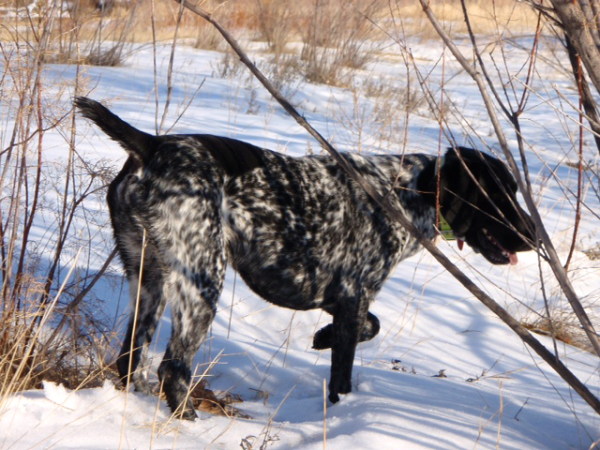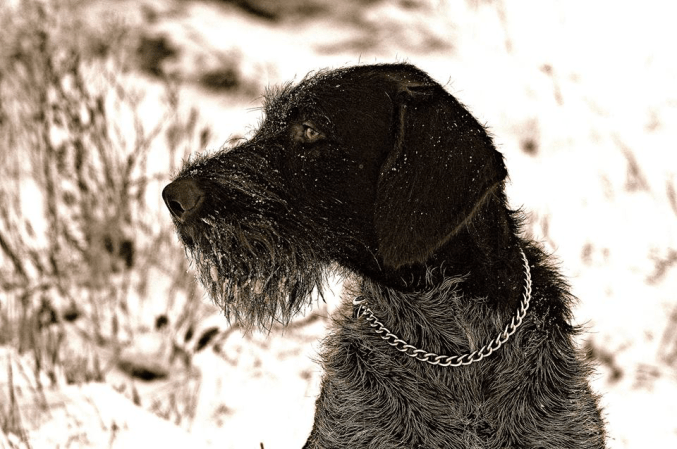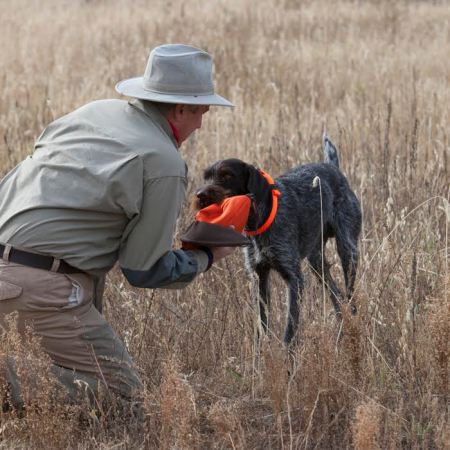I’m just back from a road trip that included a lot of public appearances. They are some of the most fun “jobs” I do—talking bird dogs and hunting with like-minded people or simply those interested in my funny-looking dogs.
The questions I get constantly amaze and often, inform me. Maybe they will do the same for you. To read the previous Q&A I did, click here. Otherwise, read on…
Q: What is proper etiquette when hunting your dog with someone else’s dog for the first time?
A: Most of the time, everyone is happier when you hunt dogs singly. Alternate them, then compare and contrast their styles at the end of the day over a tall cold one. Dogs need to be trained to hunt as a brace, must honor each other’s points and retrieves, and obviously need to get along. If you must hunt them at the same time, try spreading out–way out–and effectively hunt by yourselves. If that doesn’t discourage you, introduce the dogs on neutral ground with leashes loose so they are not feeling your stress, and if possible hunt dogs of opposite sex together.
Q: What are the pros and cons of a pointer versus a flushing dog?
A: Both have their advantages and disadvantages. A flusher will probably be ready to perform reliably a season sooner than a pointer, because you don’t have to work on steadying the dog while on point. They are also the style of choice for running roosters who will drive a pointer batty.
If you are dazzled by a staunch point, you’ll be willing to wait a season while your dog learns the ropes. On the other hand, few feelings match the constant adrenaline flow following a close-working flusher. Both need training to retrieve reliably.
Q: I have a 10-month-old German shorthaired pointer with a lot of energy. We don’t have a good off-season place to train. What are some good tips for yard training that would not promote any bad habits?
A: The only thing you can’t do in the yard that you can do in the field is extend the distance your dog covers to perform his duties. I’ve found that yard-training problems start when dogs get bored. Too much repetition is often the problem. How about developing circuits of several skills and rotate through them at a relatively fast pace, like the weight training we do at the gym? A couple repetitions for each skill are plenty in any session. Challenge the dog by going a little beyond his comfort zone for each skill.
Q: With the long-haired dogs you run, how do you keep the burrs from building up on your dog?
A: Burrs are a fact of hunting life, but luckily, my guys aren’t as long-haired as some. A good comb-out is all it takes for my wirehairs, and they get that at the end of the day along with a thorough check of eyes, ears, toes, and bellies, to make sure there are no seeds, cuts, scrapes, or bugs. Longer-haired dogs will need more of the same, or a good haircut prior to the season. Some owners use “Show Sheen,” a spray-on horse product that makes most stuff slide off hair pretty easily.
Q: How do you teach your pointer not to bump or get too close when pointing?
A: Two separate challenges, two solutions. Once a dog knows what birds smell like, you need to insist that he stops immediately upon sniffing one. Walking him into the scent cone while on a checkcord and stopping him upon his first indication of smelling birds will help him point farther from the birds. I add a “gut hitch” to apply a bit of pressure to his flank as insurance, once he’s used to the checkcord. With a remote-controlled launcher, you can fly birds if he tries to sneak in after scenting them. Steadiness–not bumping once he’s on point–is an obedience skill. Once a dog indicates he’s found a bird by pointing, your job starts. Through any number of signals, you need to teach him that he should stand still (“whoa!”) until you tell him to move again to retrieve, hunt on, or heel away.
Q: At what age should you introduce live birds to a pup?
A: Early, in controlled situations so he can’t get scared or injured by flapping wings or claws. Lately, though, I’m becoming a believer in the old-school strategy: once your pup demonstrates interest in birds, work on pointing and steadiness, obedience, and possibly retrieving. You avoid the biggest banes of pointing dog owners: dogs that chase flying birds into the next time zone, and breaking on the flush. While birds are a great motivator and reward for dogs, they probably shouldn’t be the reason he holds once he hits a point … that’s an obedience skill.
Q: I have a 10-month-old German shorthair that hunts well. How do I get her to stop trying to get other dogs’ retrieves?
A: Yard work. A retrieve and bird-in-mouth shouldn’t be the natural result of every point (or flush, for retrievers and spaniels). In training, it should be a rare treat, with the handler picking up most birds. This breaks the chain of expectation inherent in the sequence of find-point-flush-break-retrieve. Once she learns that not every flushed bird is hers, introduce other dogs and make her remain steady while they retrieve. Again, it’s an obedience challenge.
Q: I just started upland hunting last year in Colorado with my GSP Remy and was wondering what advice you can offer about dealing with rattlesnake bites. We haven’t had any run-ins yet but I’ve seen quite a few while out scouting the areas we plan on hunting this year.
A: My strategy includes snake-aversion sessions (only with a pro), annual vaccinations, and carrying an antihistamine like Benadryl. If your dog gets bit, open the Benadryl capsule and pour the powder under his tongue, hold his mouth shut until it dissolves. Keep the dog as quiet as possible, carry him if you can to your truck, and hightail it to the nearest veterinarian for observation, fluids, antibiotics, and antivenin if necessary. If your area is particularly snake-prone, wait until the weather is cold to start your season, and most snakes will be denned up for winter. Just a reminder: the new vaccine holds promise, but only works on some types of rattlesnakes. It won’t hurt, and it could help.
Q: My Lab is a bit wild when she doesn’t get out to play and run. Any suggestions for when you want to try and train her but she is just too wild?
A: Many guys joke about letting their dog out of the truck five miles before a hunt or training session so it settles down a bit. But you won’t always have that opportunity, so your dog must learn that work is work. Get back to obedience basics, and add some clear signals that it’s time for learning, not playing: load up on the training table or clip the leash on, for example. Keep your energy level down, set a vocal tone that’s a bit more down-to-business. Start each session with some fundamental obedience skills to set the mood.
Q: I have a female GSP that is currently six years old. I feed premium food but can not keep weight on her when hunting season begins. I’ve tried satin balls, cans of food, soft food, etc., in addition to her dry food but she always loses weight. She is healthy and happy and has energy but I worry about her being so skinny. What can I do?
A: I’ve got a young wirehair with the same problem, and many of the same solutions have been tried at my house! First, check with your veterinarian to make sure it’s not a medical issue and she really is underweight (visible ribs are not necessarily a bad thing, for example). Then, shop for a higher-protein and higher-fat food, and look at products without grain. Many of us add fat to dry food. Some like butter, others coconut or olive oil. There are also powder versions of the same (pork fat, for example) available. Be cautious about how much added fat you use though, as there is a slight risk of pancreatitis.














